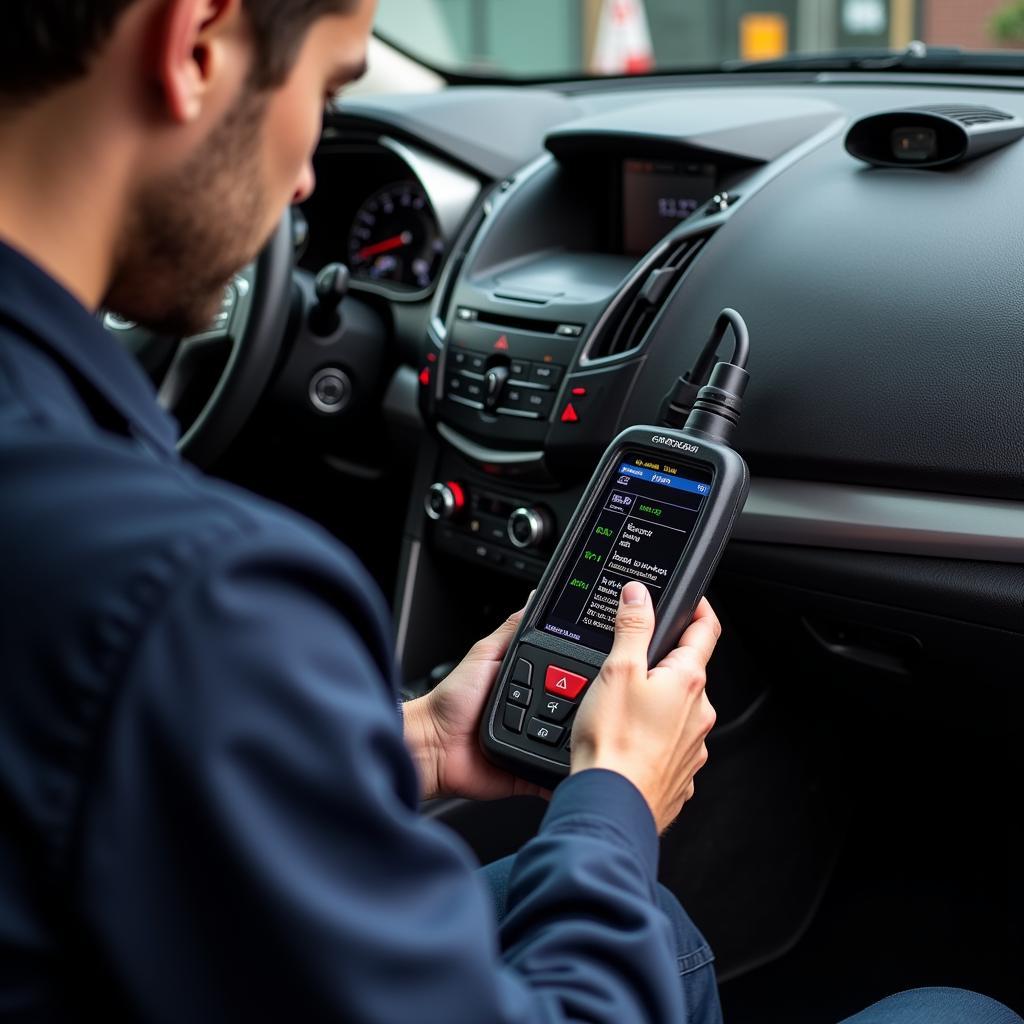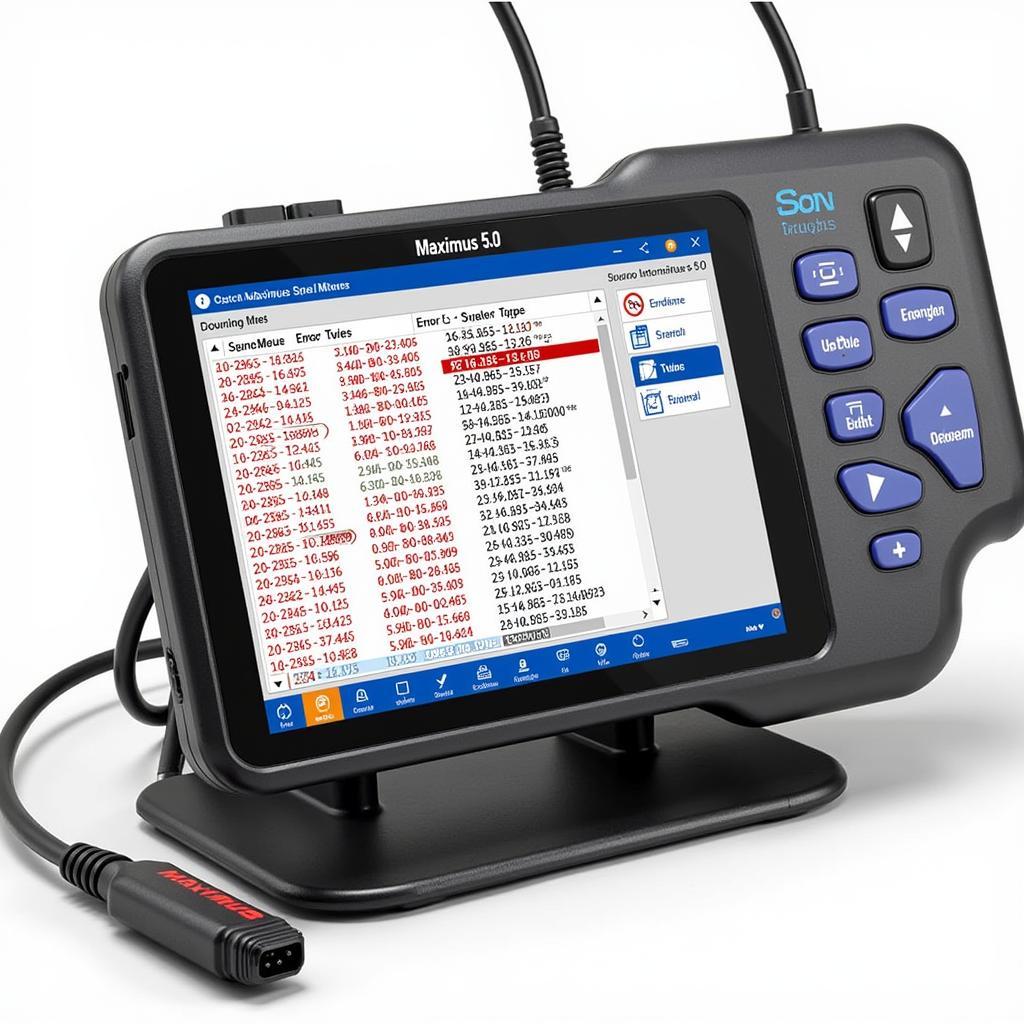Modern vehicles are complex machines, a symphony of electronics and mechanics working in concert. When a problem arises, pinpointing the source can feel like searching for a needle in a haystack. That’s where the power of a Diagnostic Car Tool comes in. These invaluable devices empower car owners, mechanics, and technicians to quickly and accurately diagnose vehicle issues, saving time, money, and frustration. Learn more about diagnostic car tools available on diagnostic car tools.
What are Diagnostic Car Tools and Why Do You Need One?
Diagnostic car tools, also known as OBD (On-Board Diagnostics) scanners, are electronic devices that connect to a vehicle’s onboard computer. They retrieve diagnostic trouble codes (DTCs) and other data, providing insights into the health and performance of various systems. From a simple check engine light to more complex issues like transmission problems or ABS malfunctions, these tools provide the information needed for accurate diagnosis and repair. Whether you’re a DIY enthusiast or a seasoned professional, a diagnostic car tool can be an essential part of your automotive toolkit. For a comprehensive guide on selecting the right tool, check out the best diagnostic car tool resource.
 Mechanic Connecting Diagnostic Car Tool to OBD Port
Mechanic Connecting Diagnostic Car Tool to OBD Port
Types of Diagnostic Car Tools: From Basic to Advanced
There’s a diagnostic car tool for every need and budget. Basic code readers are affordable and can retrieve and clear DTCs. Mid-range scanners offer more advanced features like live data streaming and freeze frame data, allowing you to monitor sensor readings and capture the state of the vehicle at the moment a fault occurred. High-end professional scan tools provide comprehensive functionalities, including bi-directional control, which enables technicians to activate components for testing purposes. Knowing the different types of tools available helps you choose one that fits your specific requirements.
How to Use a Diagnostic Car Tool: A Step-by-Step Guide
- Locate the OBD-II port: Usually found under the dashboard on the driver’s side.
- Connect the diagnostic car tool: Plug it into the OBD-II port.
- Turn on the ignition: Without starting the engine.
- Follow the tool’s instructions: Each tool has a slightly different interface.
- Retrieve DTCs: Select the option to read codes.
- Interpret the codes: Use a reliable source to understand what each code means.
- Clear the codes: After addressing the issue, clear the codes to reset the check engine light.
Choosing the Right Diagnostic Car Tool: Factors to Consider
- Vehicle Compatibility: Ensure the tool is compatible with your car’s make, model, and year.
- Features: Consider your needs and choose a tool with the appropriate functionalities.
- Budget: Set a budget and stick to it.
- User-Friendliness: Opt for a tool with an intuitive interface and clear instructions.
- Updates: Choose a tool that offers regular software updates.
“Choosing the right diagnostic tool can significantly improve your efficiency and accuracy in diagnosing vehicle issues. It’s an investment that pays for itself in the long run,” says automotive expert John Miller, ASE Certified Master Technician.
Benefits of Using Diagnostic Car Tools
Diagnostic car tools offer several key benefits, including:
- Accurate Diagnosis: Quickly pinpoint the root cause of problems, eliminating guesswork.
- Time Savings: Reduce diagnostic time and get your car back on the road faster.
- Cost Savings: Avoid unnecessary repairs by accurately identifying the issue.
- Empowerment: Take control of your car’s maintenance and repairs.
Do you need help with specific car brands like Lenovo? Explore resources like lenovo diagnostics tool descargar for tailored diagnostic solutions.
Common Questions About Diagnostic Car Tools: What You Need to Know
What is an OBD-II port? It’s the standardized port used to connect diagnostic car tools to a vehicle’s computer.
If you are specifically interested in OBD car diagnostic scan tools, learn more about obd car diagnostic scan tool. For those interested in diagnosing graphics card issues specifically for AMD, you can find helpful resources at graphics card diagnostic tool amd.
Conclusion
Diagnostic car tools are invaluable for anyone involved in automotive repair and maintenance. From simple code readers to advanced professional scanners, these tools empower users to quickly and accurately diagnose vehicle problems, saving time, money, and frustration. By understanding the different types of diagnostic car tools available and choosing one that fits your needs, you can take control of your car’s health and keep it running smoothly. For further assistance or personalized advice on selecting the perfect diagnostic car tool for you, connect with the experts at ScanToolUS at +1 (641) 206-8880 or visit our office at 1615 S Laramie Ave, Cicero, IL 60804, USA.


